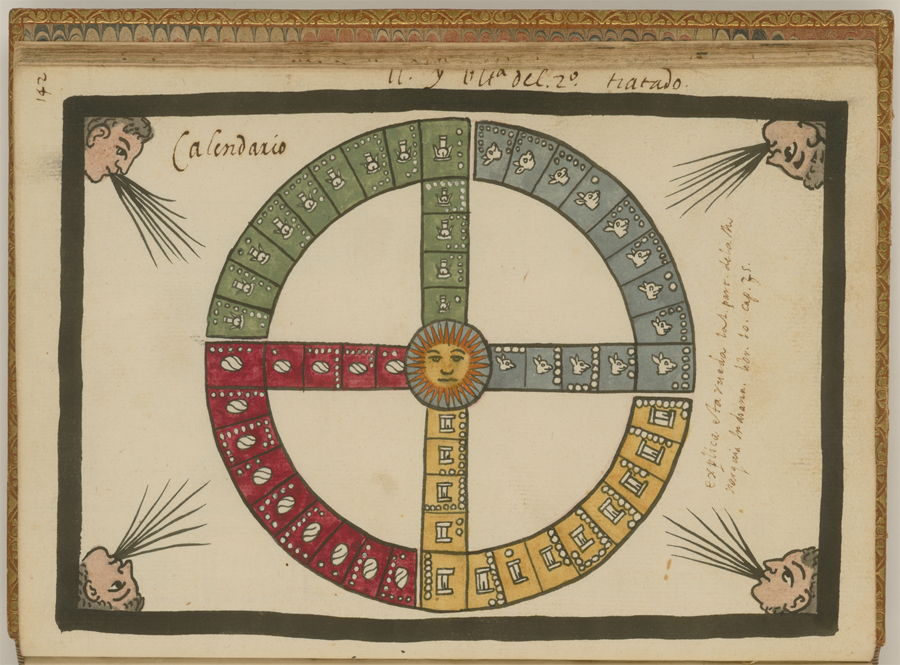Featured Source: Aztec Tonalpohualli Calendar

Description
The Tovar Codex, attributed to the 16th-century Mexican Jesuit Juan de Tovar, contains detailed information about the rites and ceremonies of the Aztecs (also known as Mexica). The codex is illustrated with 51 full-page paintings in watercolor. Strongly influenced by pre-contact pictographic manuscripts, the paintings are of exceptional artistic quality. The manuscript is divided into three sections. The first section is a history of the travels of the Aztecs prior to the arrival of the Spanish. The second section is an illustrated history of the Aztecs. The third section contains the Tovar calendar, which records a continuous Aztec calendar with months, weeks, days, dominical letters, and church festivals of a Christian 365-day year. This illustration, from the third section, shows the Aztec Tonalpohualli calendar with a sun at the center of the wheel. The Aztecs used two calendars to compute the days of the year. Xiuhpohualli (the first, or solar, calendar) consisted of 365 days, divided into 18 months of 20 units each, plus an additional period of five empty or unlucky days at the end of the year. Tonalpohualli (the second, or “day count,” calendar) had a cycle made up of 260 days, combinations of 13 numbers and 20 symbols. The second calendar was divided into four sections: theacatl (reed), the tochtli (rabbit), the calli (house), and the tecpatl (flint). The acatl section of the calendar wheel is green, the color of the paradise of Tamoanchan (the Aztec equivalent of the Garden of Eden), and represents the east. The tochtli section is blue and represents the south. The calli section is in white (here the artist has used yellow) and represents the west. The tecpatl section is the color of sacrifice or red and represents the north.
Original language: Português
